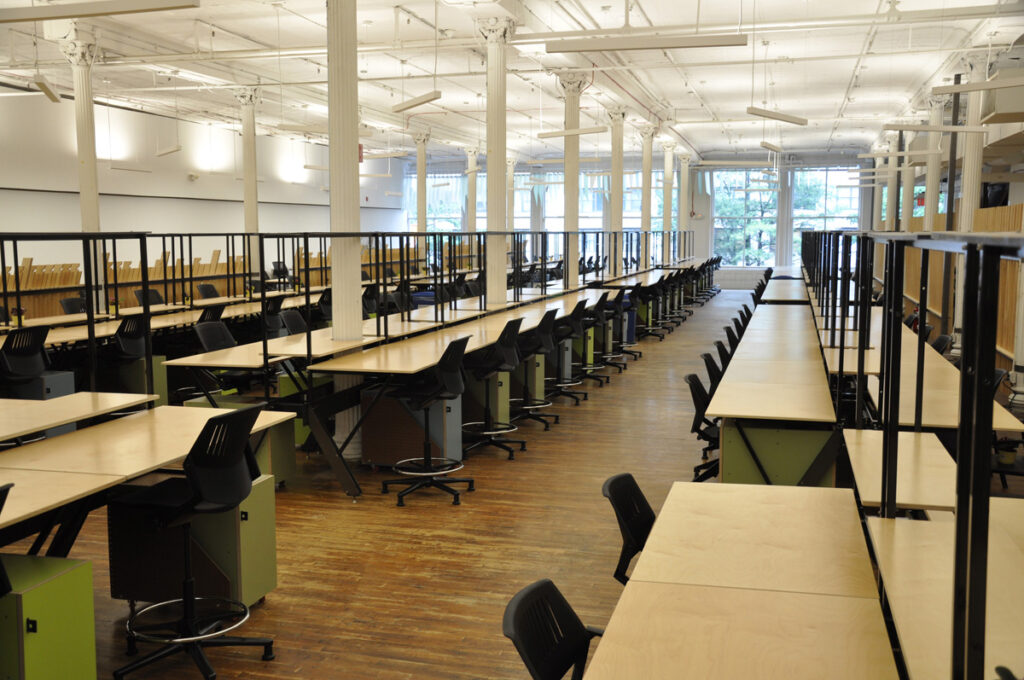
The open plan studio space on the second floor at 25 East 13th Street is an updated, aesthetically pleasing version of the architectural studio, a typology familiar to anyone who has studied architecture or worked in an architect’s office. With identical desks lined up in neat rows, illuminated by identical desk lamps and large north-facing windows, supported by vaguely-mechanistic adjustable desk chairs, it combines aspects of the artist’s studio, the open plan office, and the factory production floor. Students buzz about the space day and night, cheerful and talkative at the beginning of semester, increasingly bleary and grumpy as the weeks slide by. On the surface, there is nothing disturbing about this space at all.
Yet this space has become subject to critical interrogation, particularly by graduate students of interior design. Some of the most compelling theses done by these students over the past five years challenge modernist assumptions about transparency and repetition, particularly in the context of the workplace. The open plan office, in particular, has come under attack. Derived from the early-twentieth-century models of the typing pool and the factory floor, the open plan office was intended to encourage more efficient communication and transfer of material within a company, as well as greater economic return because it allowed more workers to inhabit the same space. It was meant to reflect in physical space a new model of “flattened” organizational structure, one in which the boss and the workers would all inhabit the same plane. Spatial transparency, close proximity, and repetitive workspaces were assumed to be positive attributes. Working closely together as a team, workers would realize the company’s objectives more quickly and successfully. In this ordered and observed environment, activities could be streamlined in order to minimize wasted labor and maximize productivity.
Excavating the ideology and gender politics of the open office and open studio, graduate interior design students have questioned its continued relevance to both contemporary workers and contemporary students. Above all, they question the lack of privacy. Spatial transparency not only increases communication, they argue, it also maximizes control. While the boss and the workers occupy the same space, and are constantly visible to one another, only the boss has the ability to comment on the worker’s behavior. As many scholars have noted, the politics of the look and the gaze are complicated not only by differences in economic and social status, but also by differences in gender. Women are particularly uncomfortable about being constantly on display. While the open studio space may increase communication, it may also limit creativity.
“Can we model our physical environment in such way that our need for escape and privacy within an open space can be accommodated?” – Gosia Rodek, MFA Interior Design, 2012
Is total visual transparency a good thing when it comes to work spaces intended for designers and students of design?
Do open workspaces necessarily foster a sense of collegiality and team-building? Might they also limit and/or control behavior?
Joanna Merwood-Salisbury
Faculty, Parsons The New School for Design

